
Piyush

Customer loyalty is important for the success of any business. In today’s competitive marketplace, retaining loyal customers is just as important as acquiring new ones. One of the most effective strategies for ensuring repeat customers is to implement loyalty programs. By understanding the various types of loyalty programs available, businesses can encourage repeat business, boost customer engagement, and ultimately drive revenue. According to research by Bond Brand Loyalty, 77% of consumers are more likely to stick with businesses that offer loyalty programs.
Over time, various loyalty strategies such as points schemes, tiered programs, and paid memberships have been used in retail. However, it’s important to assess the success of these programs in fostering genuine loyalty before determining which type of loyalty program is ideal for your brand.
In this article, we’ll explore the different types of loyalty programs, delve into the pros and cons of each with real-world examples, and provide you with a framework to identify the best loyalty program for your business.
Table of Contents:
Loyalty programs are strategic marketing initiatives designed to encourage repeat business and build customer loyalty. These programs offer various rewards, such as discounts, exclusive offers, and points-based systems, to encourage customer loyalty. By implementing different types of loyalty programs, businesses can cater to diverse customer preferences and enhance the overall customer experience. This can help in retaining customers, increasing customer satisfaction, and fostering long-term relationships, ultimately contributing to the success and growth of the business.
Understanding the different types of loyalty programs is crucial for designing one that best suits your business needs. Here are eight popular types:
One of the most popular types of loyalty programs is point-based. In this system, customers earn points for each purchase they make, which they can later redeem for rewards such as discounts, free products, or exclusive offers. This system encourages repeat purchases by giving customers a tangible reason to come back.
Example: Starbucks Rewards program The Starbucks Rewards program offers customers multiple ways to earn stars, which can be redeemed for various rewards. Customers earn 1 star per dollar when they pay with cash or a credit/debit card at the register. By scanning their Starbucks app before paying, they ensure that the purchase is linked to their Rewards account. To earn 2 stars per dollar, customers can preload funds onto their digital Starbucks Card using the app or register a physical gift card, converting it into a digital card. This not only speeds up the checkout process but also consolidates balances from multiple cards, maximizing the star-earning potential.
Additionally, customers can save their credit/debit card or PayPal information in the app, simplifying the checkout process further. This feature allows them to order ahead or scan and pay at the register in one seamless step, ensuring that they earn stars with every purchase. The Starbucks Rewards program, therefore, provides flexibility in earning stars and convenient payment methods, enhancing the overall customer experience.
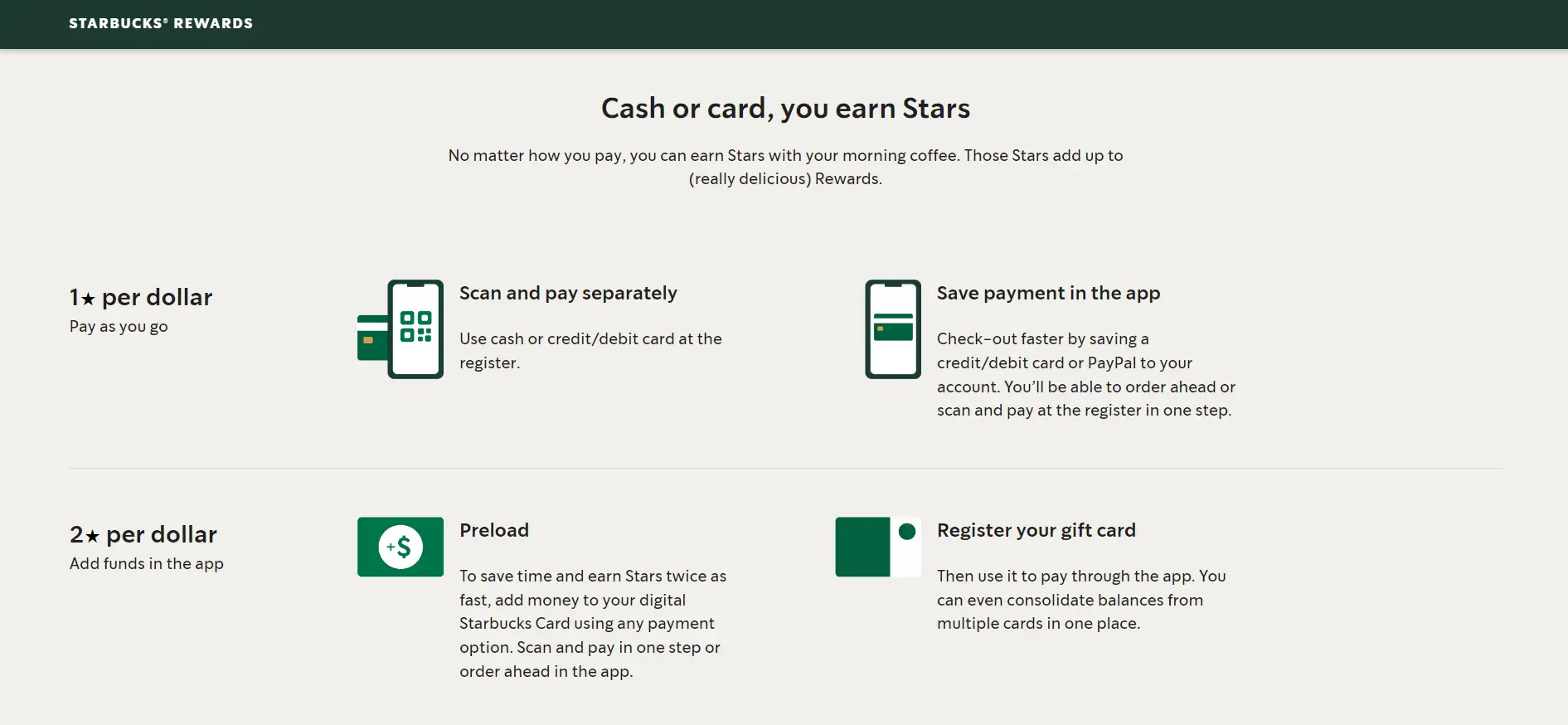
Pros:
Cons
Tiered programs offer varying levels of rewards based on a customer’s spending or engagement. This hierarchy of rewards, a common model in different types of loyalty programs, encourages customers to increase their spending to unlock higher tiers, each providing progressively better rewards. This structure creates a sense of achievement and exclusivity, encouraging customers to increase their spending to reach higher tiers.
Each tier comes with improved benefits, adding a gamification element to the loyalty program. Gamification incorporates addictive elements from video games into the program, making it more engaging and enjoyable for customers. Features like progress bars and milestones keep customers returning to earn points and unlock new rewards. This approach makes the loyalty program more enjoyable and motivating, driving continuous engagement and higher spending.
Example: Sephora’s Beauty Insider program is a tiered loyalty program designed to reward customers for their purchases and encourage higher spending through progressively more attractive benefits. This type of loyalty program has three levels: Insider, VIB (Very Important Beauty Insider), and Rouge. Each tier offers a range of perks and rewards that increase in value as members move up the tiers.
The Insider Tier is free to join and offers benefits such as free standard shipping with no minimum purchase required, the ability to apply 500 points for $10 off a qualifying purchase, and 10% off during seasonal savings events.
Members who spend $350 annually enter the VIB Tier, which includes all Insider benefits plus 15% off during seasonal savings events, 3X points during point multiplier events, and an end-of-year discount. Those who spend $1000 annually are elevated to the Rouge Tier, enjoying all VIB benefits, 20% off during seasonal savings events, 4X points during point multiplier events, and exclusive perks such as a private hotline, access to exclusive events, and the option to exchange 2,500 points for $100 off a purchase.
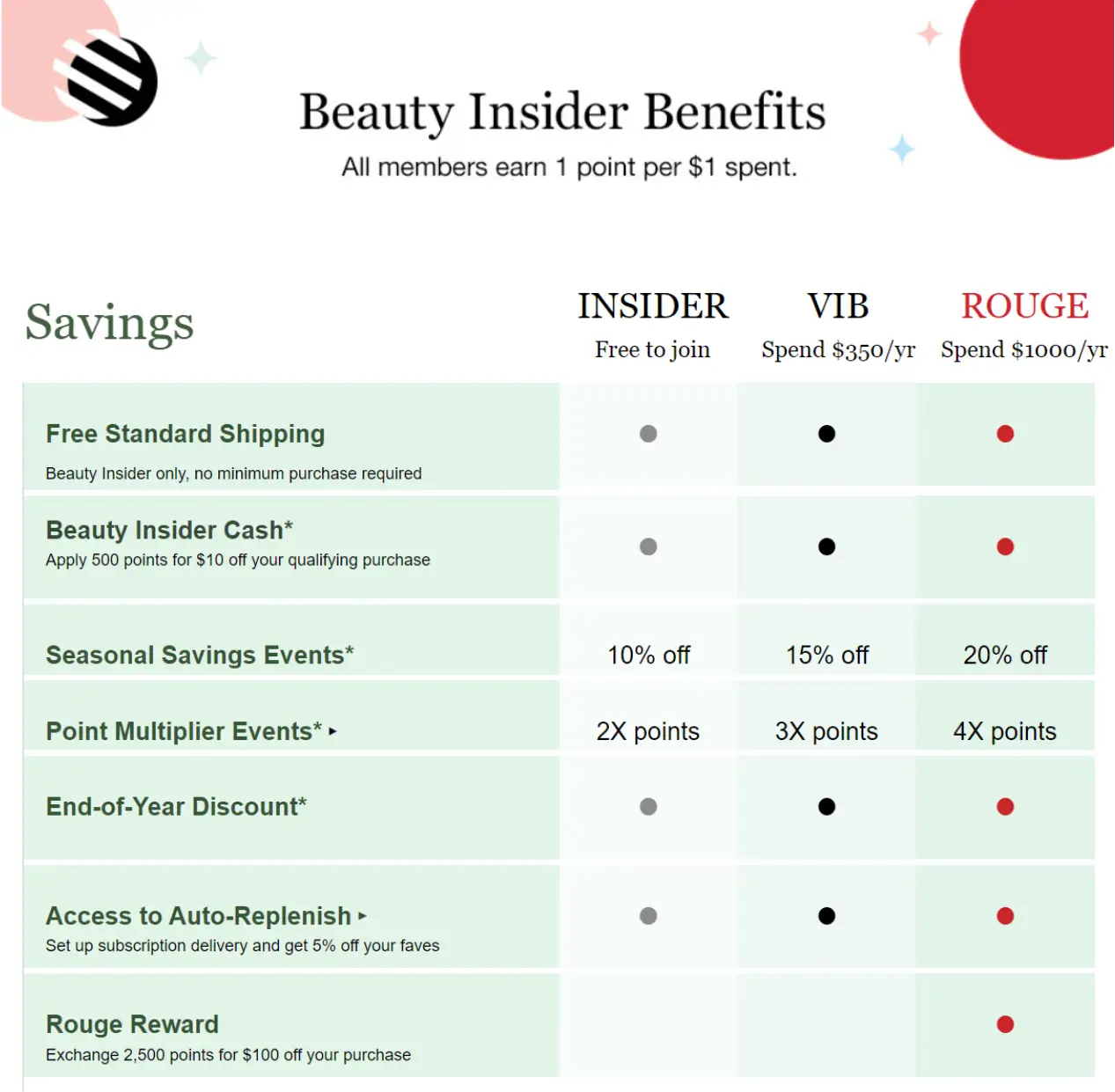
Pros:
Cons:
Paid membership programs, also known as premium loyalty programs, require customers to pay a fee to access exclusive benefits and rewards. These types of loyalty programs are designed to provide significant value that justifies the cost, such as free shipping, special discounts, early access to sales, and premium content. The immediate perks of premium loyalty create a sense of instant gratification, which is increasingly important in today’s market.
According to a McKinsey report on loyalty programs, members of paid membership programs are 60% more likely to increase their spending with your brand, compared to just a 30% increase for free loyalty programs. This demonstrates the greater impact of paid membership programs in fostering customer loyalty and driving higher spending.
Example: Amazon Prime offers a comprehensive membership program that extends beyond traditional shopping benefits. For an annual fee of $119, members are assured they receive the best possible shopping advantages, no matter when they shop. These include free two-day shipping on millions of items, exclusive discounts, and special offers. However, the value of Amazon Prime isn’t confined to these transactional benefits.
The membership also includes experiential perks such as access to Prime Video, allowing members to stream a vast library of movies, TV shows, and original content. This entertainment option adds significant value, enriching members’ daily lives beyond shopping.
Overall, Amazon Prime delivers extensive value, integrating both shopping convenience and entertainment into a single membership. This combination appeals to a broad audience, fostering customer loyalty and increasing overall spending. Members find that the benefits of the program touch various aspects of their lives, making the membership fee well worth it.
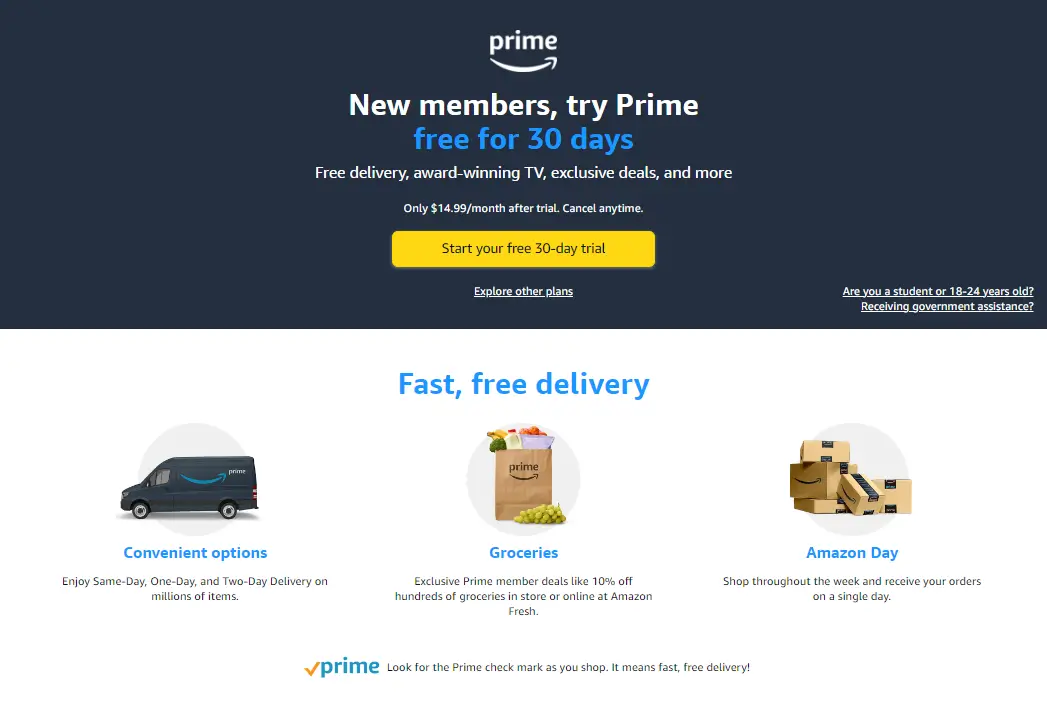
Pros:
Cons:
Cashback programs reward customers with a percentage of their purchase amount as cash back. This can be in the form of direct cash, store credit, or discounts on future purchases. These types of loyalty programs provide immediate, tangible rewards, which can be very appealing to customers.
Example: Rakuten offers a cashback program where customers earn a percentage of their purchase amount back when shopping through their platform. This straightforward approach has made it a popular choice among consumers looking for direct financial rewards. The cashback percentage varies depending on the retailer and can range from 1% to over 10%, making it attractive for a wide range of purchases. For instance, if a retailer offers 5% cashback and a customer spends $100, they will receive $5 back.
Rakuten partners with thousands of retailers across various categories, including fashion, electronics, travel, and more. To participate, customers need to create a free account on Rakuten’s website or app, find their desired retailer through the Rakuten platform, and make a purchase. The cashback is then credited to their Rakuten account and can be withdrawn via PayPal or check.
In addition to regular cashback offers, Rakuten occasionally provides special promotions and increased cashback rates during events like Black Friday or Cyber Monday. New users also benefit from an extra 10% cashback on purchases made in their first 7 days, enhancing the appeal of joining the program.
Rakuten’s extensive network of partners and the ease of earning cashback has resulted in over 20 million members and $3.2 billion paid to members since 1999. With an average cashback per member of $90.16 in 2023 and more than 29,000 5-star reviews on Trustpilot, Rakuten continues to be a trusted and valuable service for savvy shoppers.
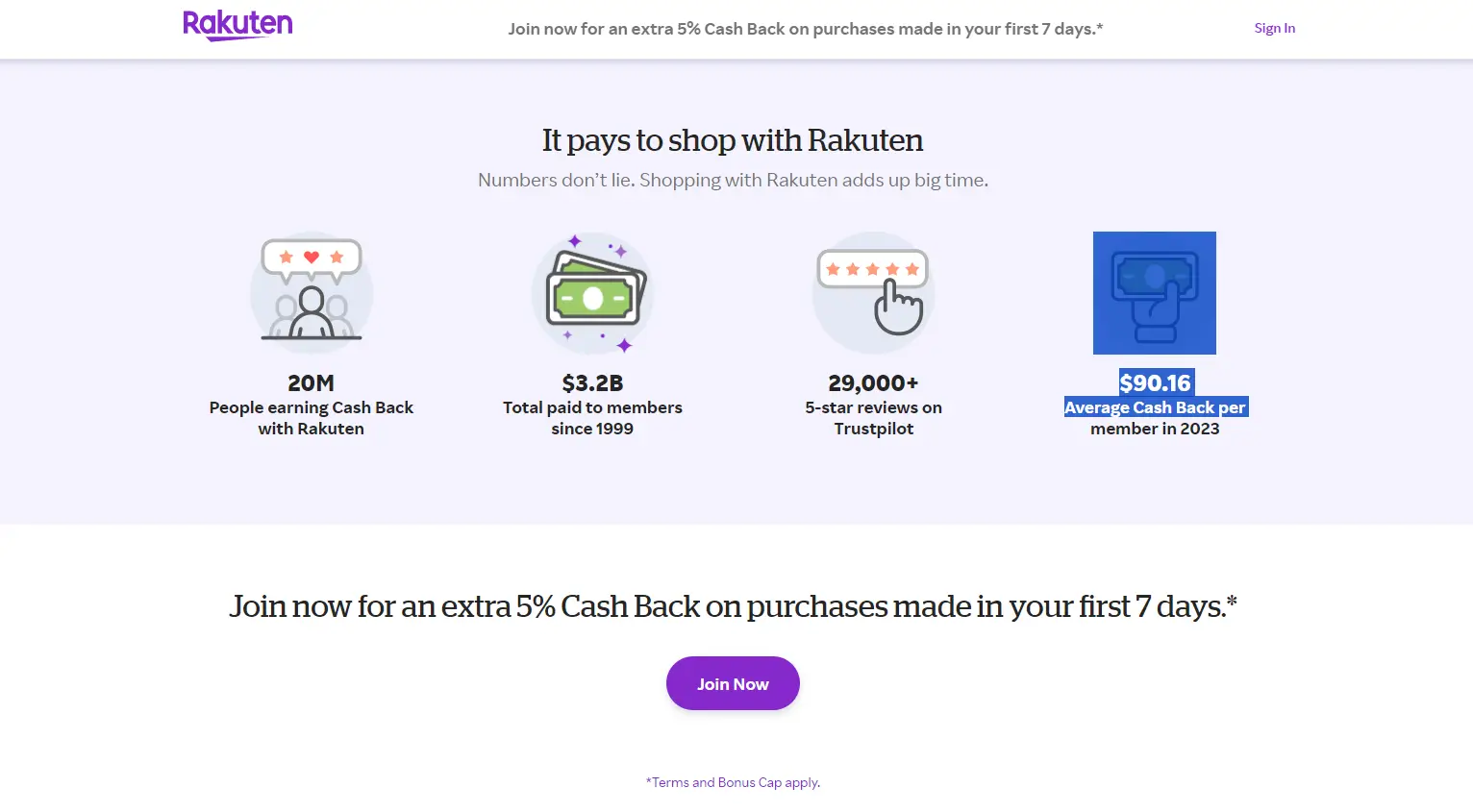
Pros:
Cons:
Value-based programs are designed to resonate with customers by aligning with their personal values and beliefs. These types of loyalty programs offer rewards that reflect shared principles, such as making charitable donations or supporting eco-friendly initiatives. By incorporating these elements, businesses can build deeper emotional connections with their customers. When customers see that a company supports causes they care about, it fosters a sense of loyalty and trust. This emotional bond goes beyond traditional transactional relationships, creating a community of customers who feel personally invested in the company’s mission and values.
Example: TOMS One for One program distributes one pair of shoes to a needy child for every pair purchased. This value-based strategy appeals to socially concerned consumers, strengthening their emotional connection to the company. TOMS has created a strong brand identity based on its dedication to social good, attracting people who value ethical consumption.

Pros:
Cons:
Coalition programs, categorized under the umbrella of types of loyalty programs, involve multiple businesses partnering to offer a shared loyalty program. Customers can earn and redeem rewards across different brands, increasing the value and flexibility of the program.
Example: Air Miles is a coalition program where customers earn miles on purchases at various partner retailers. These miles can be redeemed for travel, merchandise, and experiences, offering significant value to participants. Air Miles’ extensive network of partners enhances its appeal, providing customers with numerous opportunities to earn and redeem rewards.

Pros:
Cons:
Game-based programs use gamification elements to engage customers. These types of loyalty programs often involve challenges, levels, and rewards for participation and achievements, making the loyalty experience fun and interactive.
Example: NikePlus incorporates gamification through its app, rewarding users with points for completing workouts and participating in challenges. These points can be redeemed for exclusive products and experiences, fostering engagement and loyalty. NikePlus leverages fitness challenges and social features to keep users motivated and engaged.
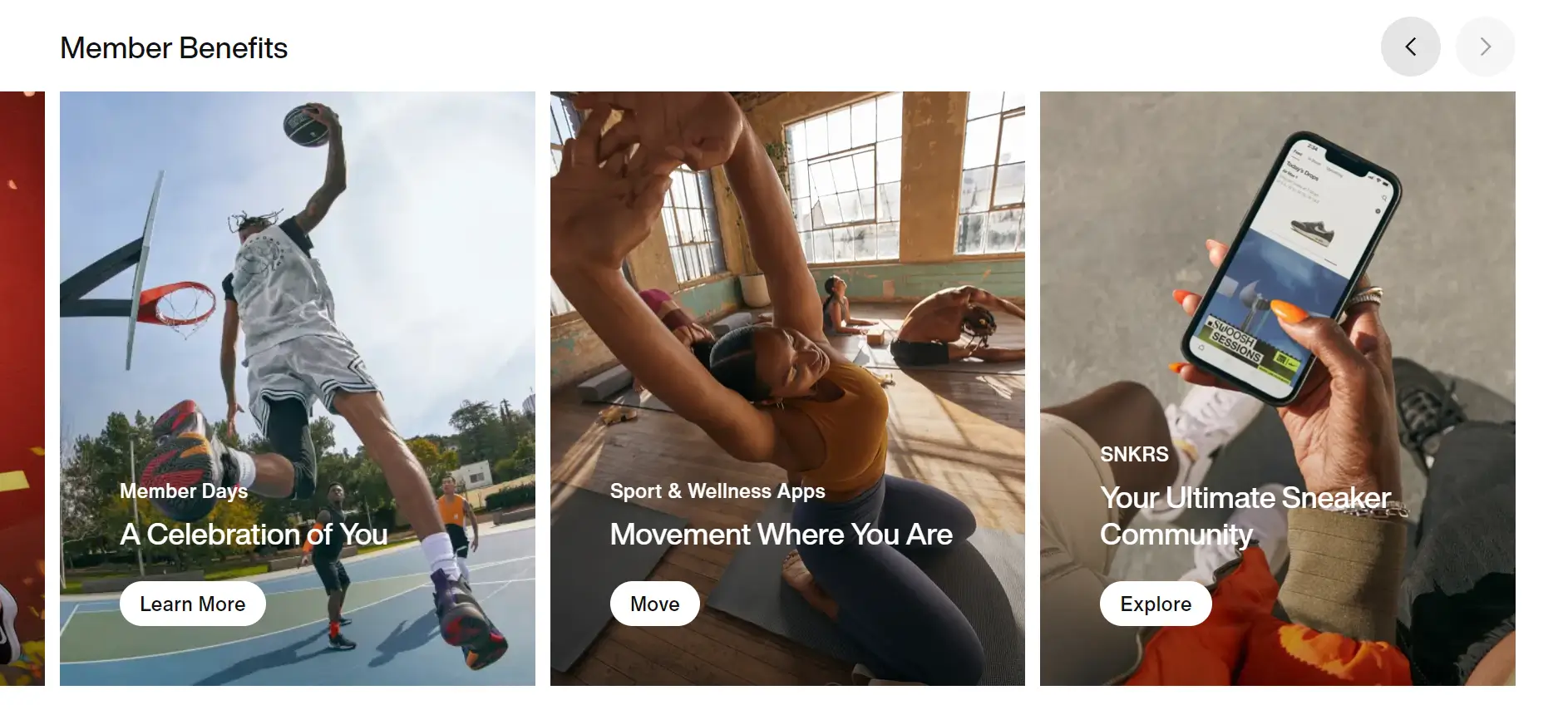
Pros:
Cons:
Subscription-based programs offer exclusive benefits and content to subscribers, typically in exchange for a recurring fee. These types of loyalty programs provide ongoing value and foster a sense of community among subscribers.
Example: Netflix offers a subscription service where members receive unlimited access to a vast library of movies, TV shows, and original content. This model has been highly successful in retaining subscribers and generating steady revenue. Netflix’s continuous addition of new content ensures ongoing value for its subscribers.

Pros:
Cons:

Choosing the right type of loyalty program, whether it’s points-based, tiered, or a paid membership program, depends on your business goals and customer preferences. Ensure that the program you choose aligns with your budget, brand identity, and what your customers value most. Regularly assessing the performance of your loyalty program is vital to maintaining customer engagement, encouraging repeat business, and differentiating your brand in a competitive market.
To simplify the implementation and management of your loyalty program, consider using advanced loyalty program software such as 99minds. This platform offers a comprehensive solution to create, manage, and optimize loyalty programs, maximizing customer engagement and retention.
With 99minds, you can tailor a loyalty program that aligns perfectly with your brand and customer expectations, seamlessly integrate it with your existing systems, and utilize data-driven insights to continuously improve the program. Additionally, expert support is available to ensure your loyalty program’s success.
Start your journey to enhancing customer loyalty and transforming your customer relationships.